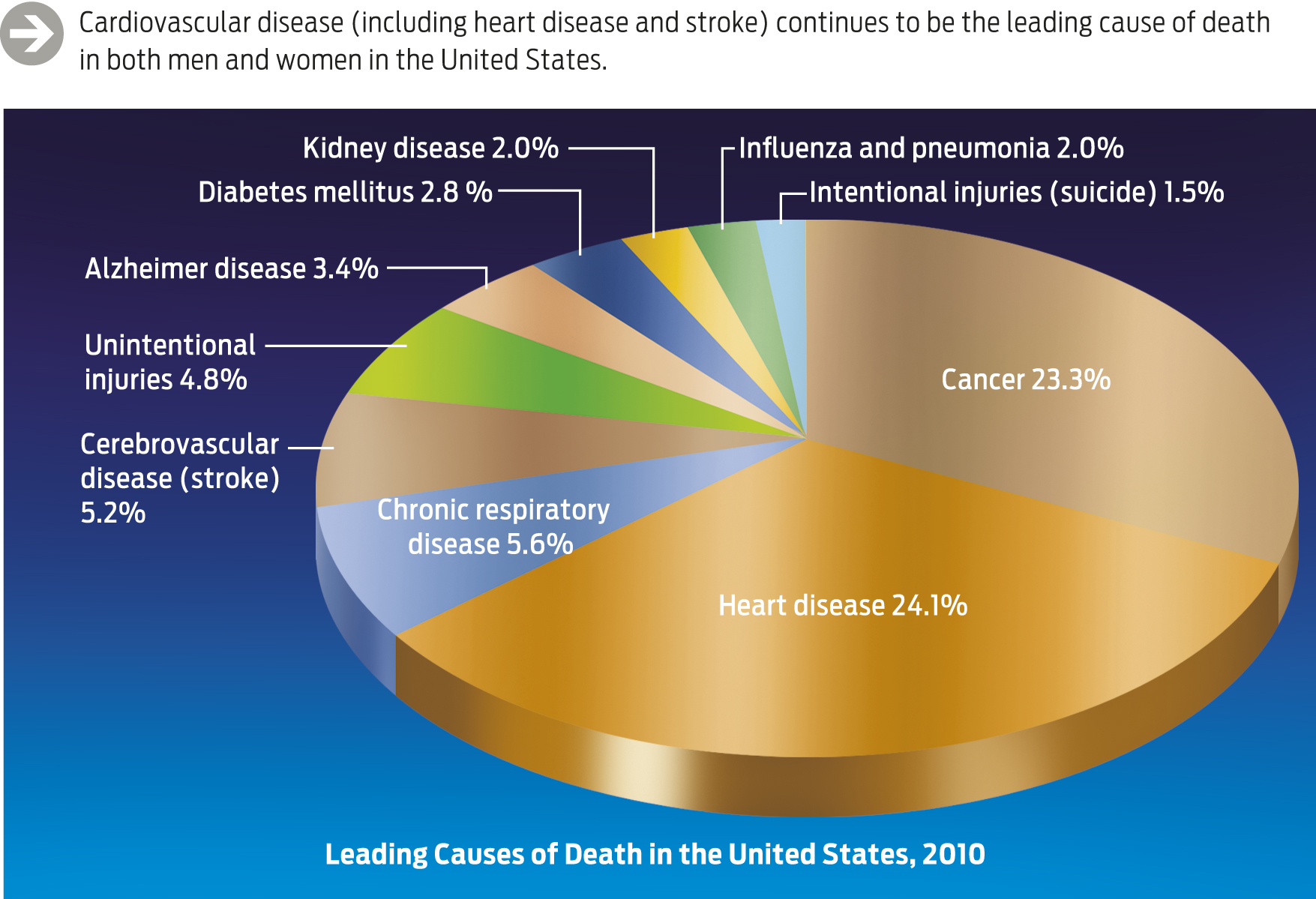A SILENT EPIDEMIC
Cardiovascular disease (CVD), more colloquially known as heart disease, is the number one killer of men and women in the United States and the developed world. Every year, more people die from cardiovascular disease than from cancer and Alzheimer disease combined. According to the Centers for Disease Control and Prevention (CDC), one in three deaths in the United States is caused by cardiovascular disease—roughly 2,200 deaths per day (INFOGRAPHIC 27.1) .

CVD claims so many lives each year for two main reasons. The disease is largely “silent”—people don't know they're sick until it's too late. And the system it affects is one of the most important to our survival, so when things go wrong, the result tends to be fatal.
Every year, more people die from cardiovascular disease than from cancer and Alzheimer disease combined.
5
The cardiovascular system transports nutrients, gases, hormones, and other critical molecules throughout the body. It consists of the heart, blood vessels, and blood. The cardiovascular system works closely with the respiratory system (see Chapter 28), which moves oxygen from the air into the lungs and removes carbon dioxide waste.
The heart is essentially a pump. It is about the size of a fist and very muscular. By repeatedly contracting and relaxing, it pumps blood throughout the body. The heart has four chambers: two paired atria above two paired ventricles. The atria receive blood into the heart, and the ventricles pump blood out of it.
Blood travels through the body in different types of blood vessel. Blood vessels that carry blood away from the heart are called arteries, and blood vessels that return blood to the heart are called veins.
6
Blood is composed of cells and liquid. One of its important roles is to carry oxygen to all tissues of the body and ship away carbon dioxide waste (INFOGRAPHIC 27.2) .

For decades, doctors have known that cardiovascular disease is essentially a matter of bad plumbing. Fatty deposits develop in the arteries that deliver blood to the body or to the heart muscle itself, cutting off or reducing blood flow to these tissues. This is dangerous because blood carries not only nutrients like sugar needed for energy, but also gases like oxygen needed to carry out aerobic respiration (see Chapter 6). When the arteries that supply blood directly to the heart muscle—the coronary arteries—are blocked, the cells of the heart begin to die. This is a heart attack.
For the most part, young people do not have heart attacks (and those that do usually suffer from rare genetic conditions). But just because teenagers do not die from heart disease does not mean they can ignore heart health. That's because heart disease can be insidiously gaining a foothold long before we have any obvious symptoms.
This is common knowledge now, but when Gerald Berenson started his study in 1972, it was far from accepted wisdom. Cardiologists—influenced by the prevailing beliefs of the day—focused more on treatment than on prevention. But Berenson had been trained in pediatrics as well as cardiology, and he knew that it was important to understand the beginnings of heart disease as well as its endings. He submitted an application to the National Institutes of Health (NIH) and won a competitive grant to study heart disease in children. Known as the Bogalusa Heart Study, it would fundamentally change how doctors understand heart disease.
7
The study would take an epidemiological approach: children and young people ages 5–17 would be enrolled through the school system and monitored twice yearly. Nurses would measure their height, weight, smoking history, blood pressure, and cholesterol levels, among other variables. They would return for evaluation every several years, up to age 45. Later, it was decided that any of the study participants who died would be autopsied.
From small beginnings, the study grew to enroll some 16,000 individuals. It is now one of the longest-running cardiovascular disease studies in the world, the only one with a biracial (black–white) study population, and the first to document that heart disease begins in childhood.